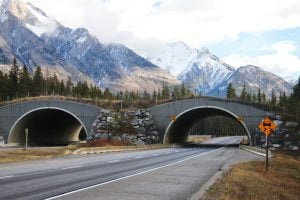Meanwhile, conservationists are continually working to win the support and cooperation of the local population. In 1990, just 10,000 people lived here, mainly on Santa Cruz and San Cristóbal islands. Today, the number of Galapaguenos stands at about 30,000, the same as the giant tortoise population.
And not all locals are enthusiastic about eradication programs, we’re told — or as one naturalist puts it, some people would prefer to be eating goats, not getting rid of them. “We need locals to buy into the importance of conservation,” says Arturo Izurieta, executive director of the Charles Darwin Foundation, the scientific organization that operates the Santa Cruz research station.
Like several of the islands’ giant tortoise species, the mangrove finch is endangered, but all because of a common fly that lays eggs in its nests and feeds on its blood. That’s why for the last three years, the research station — in conjunction with the national park, San Diego Zoo Global and Durrell Wildlife Conservation Trust — has operated a program to boost the bird’s population. The chicks are raised in captivity for the first eight weeks of their lives, during which they are fed up to 15 times a day, and then they are returned to their natural habitat.
It was this famous songbird that helped Darwin develop his scientific theory of evolution. He identified 14 finch species that live only in the Galapagos, and observed that their beaks had evolved to different lengths and shapes. Darwin attributed this to their geographical isolation and exposure to different environmental conditions. It seems like a logical conclusion today, but at the time, the idea was so revolutionary he didn’t publish his findings until 1859, more than two decades after he set foot in the Galapagos. His deeply religious wife, Emma Wedgwood, remained vehemently opposed to his theory, as did many other critics.
I feel a deep thrill as we land on Santiago Island, where Darwin spent nine days camping. We wade ashore from the Zodiacs to avoid the swell, then take an early morning walk along the pristine beach, jumping over poisonous green apples that cover the ground and marvelling at the sea turtle tracks in the sand. This is where Darwin collected many of his plant species. I imagine his delight as he took in the sight of the fur seals playing in the water. With their whiskers, huge eyes and short, flat tails, they resemble playful bears. I imagine, too, how he must have felt when he saw his first giant tortoise.















